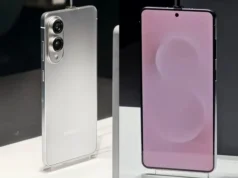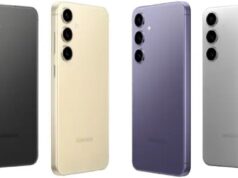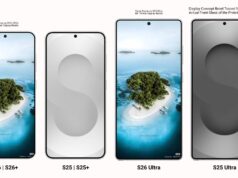Samsung’s Galaxy Z Flip series has been a game-changer in the foldable phone market. But with the upcoming Galaxy Z Flip 7, innovation seems to be slowing down. While many expected a massive leap in technology, the reality is that clamshell foldables, including those from other brands, have all hit a plateau.
What Happened to Innovation in Foldable Phones?
The first few generations of foldable phones were exciting. Samsung, Motorola, and other manufacturers were racing to create sleek, compact foldables that felt futuristic. But now, with the Galaxy Z Flip 7 on the horizon, it feels like we’re just getting small upgrades rather than groundbreaking features.
- Same Design, Minor Tweaks: The Galaxy Z Flip 7 isn’t expected to have a drastic design overhaul. Like its predecessors, it will likely feature a vertical folding mechanism, a small outer display, and a large flexible inner screen.
- Incremental Performance Upgrades: The processor and RAM may see improvements, but these changes are standard across all smartphone releases.
- Camera Refinements: While Samsung might enhance the camera with better sensors or AI-powered software, it won’t be a revolutionary leap.
- Battery and Charging Enhancements: Slightly faster charging and minor battery efficiency gains are expected, but nothing game-changing.

Are Other Clamshell Phones Any Better?
Samsung isn’t the only one guilty of this stagnation. Other foldable clamshell phones have also become victims of incremental updates. Let’s take a look:
Motorola Razr+
Motorola revived its Razr series with a foldable design, hoping to capture nostalgia and modern innovation. While the Razr+ has a larger cover display and better hinge improvements, it still doesn’t offer anything groundbreaking over previous models.
Oppo Find N Flip
Oppo entered the foldable space with the Find N Flip, featuring a solid hinge and decent specs. But again, it lacks any major advancements that redefine the category.
Google Pixel Fold (Future Clamshell?)
Google has entered the foldable market, but its first Pixel Fold wasn’t a clamshell. If Google does launch a clamshell version, will it shake things up? That remains to be seen, but based on industry trends, it’s unlikely to be a revolution.
Why Are Foldable Phones Stuck in a Rut?
1. Durability Challenges: Foldable screens are fragile, and improving their durability is a slow process.
2. Cost vs. Demand: Premium foldables are expensive, and companies hesitate to make drastic changes that could push prices even higher.
3. Limited Use Cases: While the foldable form factor is stylish, it doesn’t significantly change how people use their phones.
4. Software Limitations: Apps still don’t fully utilize foldable screens, making it less compelling to upgrade year after year.
What Could Make the Galaxy Z Flip 7 Exciting?
If Samsung truly wants to reignite excitement in the clamshell foldable market, it needs to do more than small refinements. Here are some ideas:
- A Creaseless Display: A truly seamless foldable screen would be a game-changer.
- Longer Battery Life: Extending battery performance to last well beyond a day would be a major selling point.
- Advanced AI Integration: Smarter software features that adapt to the foldable design could make multitasking more intuitive.
- Better Hinge Technology: A hinge that allows for multiple positions without visible wear over time.
- Affordable Price: Bringing the cost down would make foldables more mainstream.
Conclusion
The Galaxy Z Flip 7 is shaping up to be another minor upgrade rather than a revolutionary step forward. However, Samsung isn’t alone in this. The entire clamshell foldable market has slowed down when it comes to true innovation. Unless we see major advancements, foldables might remain a niche product rather than the future of smartphones.
If you’re waiting for the next big thing, you might have to look beyond clamshell designs. But for now, the Galaxy Z Flip 7 and its competitors will continue to refine, rather than redefine, the foldable experience.










